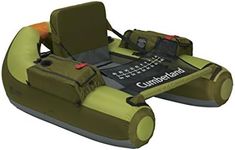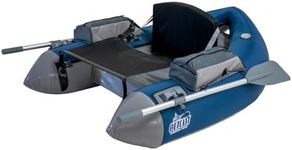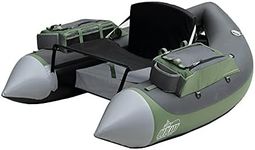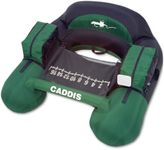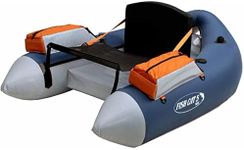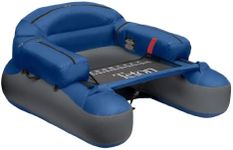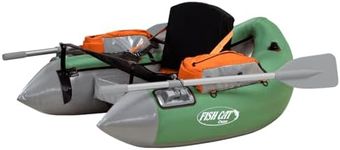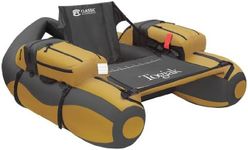Buying Guide for the Best Float Tubes
Choosing the right float tube can greatly enhance your fishing or leisure experience on the water. Float tubes are inflatable devices that allow you to sit comfortably while floating on the water, making them ideal for fishing in lakes, ponds, and slow-moving rivers. When selecting a float tube, it's important to consider several key specifications to ensure you get the best fit for your needs. Here are the main specs to look at and how to navigate them.MaterialThe material of a float tube determines its durability, weight, and resistance to punctures. Common materials include PVC, nylon, and polyester. PVC is highly durable and puncture-resistant, making it suitable for rougher conditions. Nylon is lightweight and offers good durability, while polyester is also lightweight but may not be as durable as PVC. Choose a material based on where you plan to use the float tube and how often you will be using it.
Weight CapacityWeight capacity refers to the maximum weight the float tube can safely support, including the user and any gear. This is crucial for safety and performance. Float tubes typically range from 200 to 350 pounds. If you plan to carry a lot of gear or if you are a larger individual, opt for a higher weight capacity. Always ensure the weight capacity exceeds your total weight plus any additional equipment.
Size and DimensionsThe size and dimensions of a float tube affect comfort and maneuverability. Larger tubes offer more space and stability, making them ideal for extended fishing trips and carrying more gear. Smaller tubes are more maneuverable and easier to transport. Consider how much space you need for comfort and gear, as well as how easy it will be to transport and store the float tube.
Seat TypeThe seat type in a float tube can impact your comfort and fishing efficiency. Seats can be inflatable, foam, or adjustable. Inflatable seats are lightweight and easy to store, foam seats provide more comfort and support, and adjustable seats allow you to customize your seating position. Choose a seat type based on how long you plan to be on the water and your comfort preferences.
Storage OptionsStorage options in a float tube include pockets, pouches, and D-rings for attaching gear. More storage options allow you to keep your gear organized and easily accessible. If you plan to carry a lot of equipment, look for float tubes with ample storage solutions. Consider what gear you need to bring and ensure the float tube has enough storage to accommodate it.
Bladder SystemThe bladder system in a float tube consists of the internal air chambers that keep it afloat. Single bladder systems are simpler and easier to inflate, while multiple bladder systems offer added safety in case one bladder fails. If safety is a top priority, opt for a float tube with multiple bladders. Consider how easy it is to inflate and deflate the bladders and how reliable they are.
PortabilityPortability refers to how easy it is to transport and store the float tube. This includes the weight of the tube, how compact it is when deflated, and whether it comes with a carrying bag. If you need to hike to your fishing spot or have limited storage space, look for a lightweight and compact float tube. Consider how you will transport the tube and choose one that fits your needs.


